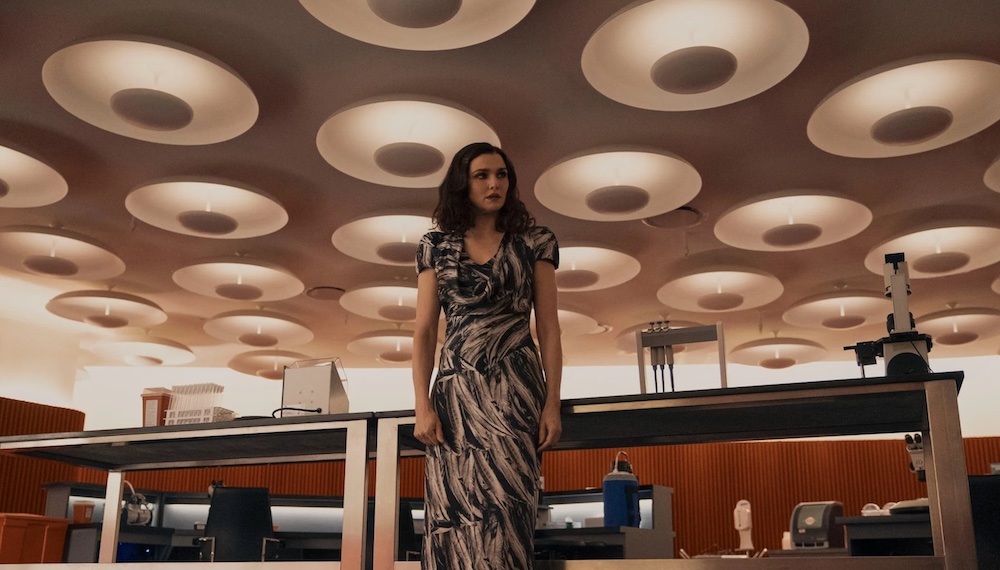
Dead Ringers kills on numerous levels. Rachel Weisz dominates the screen as the wildly different inseparable twin gynecologists, Beverly and Elliot Mantle. The music seethes, and the cinematography dazzles. And then there are the sets where Alice Birch’s take on the novel Twins and the David Cronenberg film, also called Dead Ringers, unfolds in all its perverse, still-timely horror. The Mantle sisters’ apartment, especially the bathroom, is a character unto itself, as are the hospital and, later, the birthing clinic where they work, suffer, compete, and more.
The sets are the handiwork of Production Designer Erin Magill, who previously lent her talents –as a Production Designer, Art Director, or Assistant Art Director – to Ziwe, Britanny Runs a Marathon, The Romanoffs, Future Man, and Mad Men, and worked at Pixar.
Below the Line recently spoke with Magill – via Zoom from the Bay Area, where she was visiting family –at length about the early days of her career and Dead Ringers.
BTL: As you started out in the business, whose work did you admire? Who were your mentors?
Magill: I was lucky enough to start my career at Pixar, which I would say was fundamental. I eventually left because I figured out animation itself was not my end-all, be-all goal. It was such a wonderful foundation in the importance of the story and the script are the beginning for everything. When I left there and went to AFI, specifically for getting into production design and live action… A professor of ours talked about her early career, about picking up the phone and calling designers that she had respected. I’m not sure if I would’ve had the guts to do that. Thankfully, in the age of the internet, I did the same thing — but through email. During my time at AFI, I would scour IMDB for films that I had loved. I looked up the Designer, the Art Director, and the Decorator.
Looking back, it’s still something I now tell people when they reach out to me to do because more often than not those people will respond. We’re not the big actors and directors that people are reaching out to. If someone genuinely wants to hear our process, it’s a great opportunity to do that. One of those people, at the time, was the art director on Mad Men. I had coffee with Chris Brown and then it was a few months after graduating AFI that I received an opportunity to interview for the Art Department Assistant position, for Season 6. I was convinced that it was, “Oh, good thing I reached out to him. It was all because of the coffee I had with Chris Brown.”
Later I learned it was also because a professor of mine at AFI had worked with (Production Designer) Dan Bishop before and he recommended me to the two of them. I would say David Morong, who was that professor, played an integral role in me getting that chance to meet with them. Dan, I respect the work that he has done. He was definitely one of my first real mentors, him and Chris Brown. Frankly, the entire Mad Men Art Department team and Set Dec team. Even after grad school, it was a crash course in working on one of the best TV shows of all-time. It was quite an experience, especially for that art department, to see how they function and get the chance to work under them on that project and a few others after.
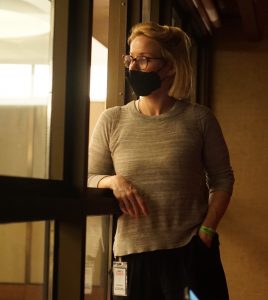
BTL: Am I right that you started as an Art Department Intern on Ratatouille?
Magill: Yes. That was when I was at UC Davis and after my inspiration from John Lacovelli. It was a film minor, but in northern California at that time there was not a ton of filmmaking going on. I was able to find a connection and get into that art department. With Ratatouille, I was sent to the supermarket often to get vegetables and to cut photo packets. There were a lot of similarities between Pixar and Mad Men that I learned early on. The attention to detail in both of those environments, while having different outcomes of storytelling, was very much the same.
BTL: What would you say were some of your formative post-Pixar and Mad Men experiences building up to this? If you look back, what made you who and what you are now, in terms of work?
Magill: The first feature I got to design was Kicks. I was Assistant Art Directing on Straight Outta Compton and I was offered a chance to go assistant Art Direct on the Coen Brothers film, Hail Caesar. Of course, it was a dream opportunity. I’m such a fan of their work and it was this period film in L.A. At the same time, I was offered this chance to go design my first feature. I’ll never forget, the Designer I was working for at the time, Shane Valentino, looked at me and was hearing me talk through the pros and cons. He said, “You want to be a designer? Go design.” I’m forever grateful.
As much as that Coen Brothers experience would’ve been amazing, when I got to be in that moment of designing my first feature, especially with the Writer-Director, Justin Tipping, whom I’ve worked with since and will hopefully work with again when the strike is over, on a project we have in the works. It was the collaboration. We had both gone to AFI. It was that moment of, “I can be an Art Director, but as a Designer, talking through a story with the Director and Writer…” Everything clicked, and I knew this was absolutely what I wanted to be doing.
It was a good thing I left Pixar to follow this, which my parents were worried about at one point, for sure. Those were definitely fundamental moments. When you first start out designing, with a lot of things it’s often about location and augmentation, but really the chance to build something from scratch. I had gotten to do some of it, but when I did Ziwe, it was the first job I took once we had been not working for so long because of the pandemic. There weren’t even scripts in the beginning. There were a few key phrases, and this idea to completely rethink the late-night space from this unique female perspective was just… to go back and look at the initial conversations with her, her writers, and our references to the drawings, to the final thing was this satisfying experience as a Designer, to create something completely from scratch like that.
BTL: And such a fun, cool set that Barbie right now would be very at home on.
Magill: One of the key phrases was Barbie’s dreamhouse.
BTL: How did Dead Ringers come your way?
Magill: Probably one of the best compliments I ever got was when I had the opportunity to meet Rachel Weisz, who is an EP on the show as well. She was in that interview and she had mentioned how much she had enjoyed the small film I had designed called Swallow. Looking at obviously two very different size budgets and issues, it makes a lot of sense why she thought I might be the right fit for the project in terms of this psychological thriller/horror from a female perspective.
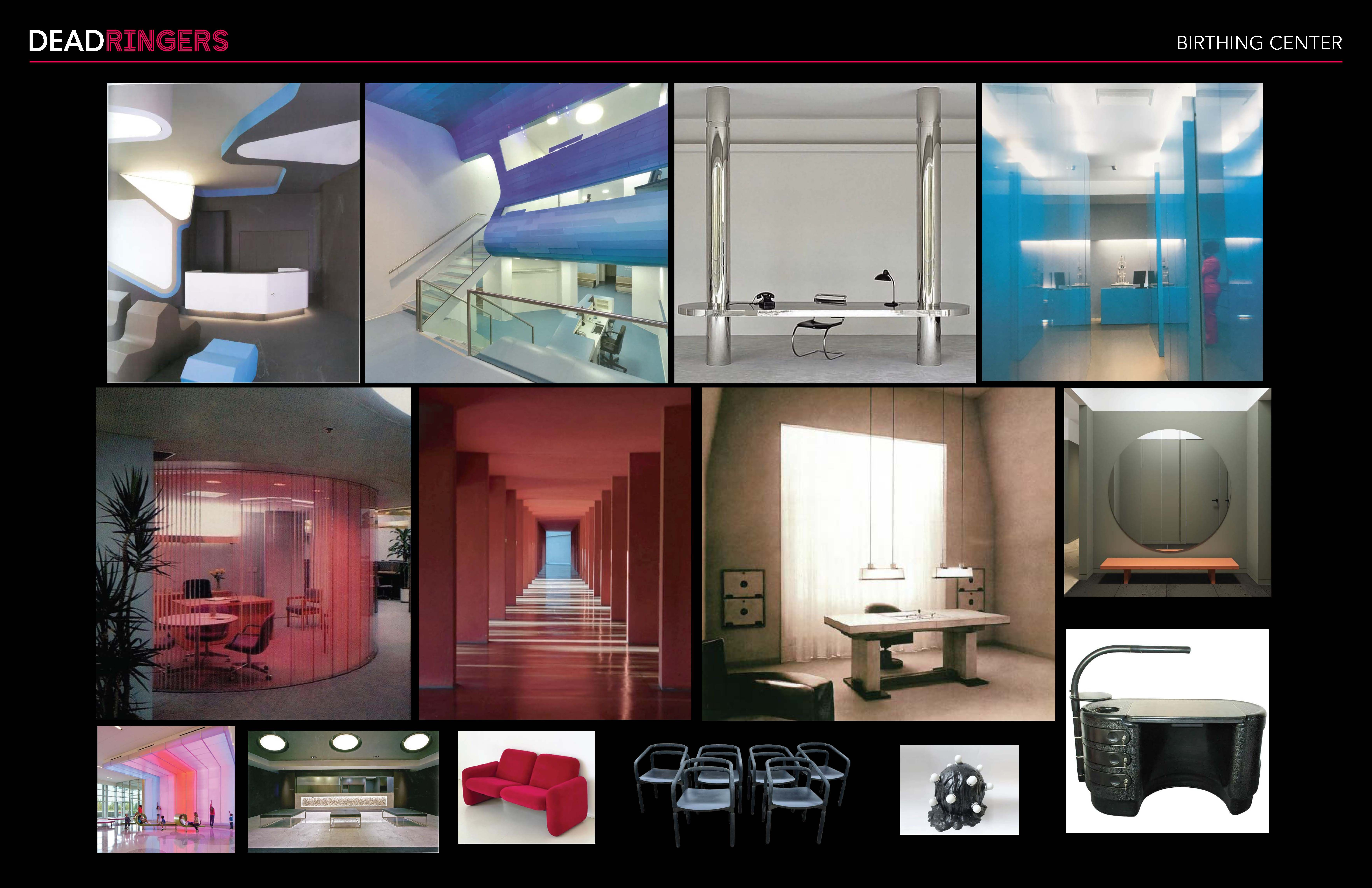
Of course, I was familiar with the original film. To be honest, it wasn’t something that I had just seen. I brushed up and reminded myself before the interview. I had always been a fan of it, especially Jeremy Irons’ performance. The minute I read the first couple scripts they had sent me, I was blown away. It was exactly the kind of project I was hoping to be a part of. Since working on Mad Men, where the scripts are like the most well-written books you’ve ever read, Alice’s scripts were that enjoyable as well.
BTL: What did Alice say she expected/needed from you?
Magill: It was a combination of things. On one hand, the smaller elephant in the room is you can’t ignore the original film, to a degree. That aside, so much of what Alice had written was rooted in — and what was most interesting to me — such a reality of the conditions of women’s healthcare in this country, but also specifically the high level that these twins had reached, not only at the hospitals they would be working with, but the kind of crowds they would be with and socialize in. Knowing where this story was going, there was of course going to be this ability to build tension. Rooting it in the reality of their world and their wealth was something we talked a lot about.
Also, making it feel specific to New York and a bit of that chaos of New York, this old cliché that it’s the city that never sleeps. That actually felt very apropos for the fact that the doctors have such insane schedules; as we learn, the extracurricular habits of both the twins and this idea that they’re up all the time and very manic. Some of those story points were helpful in laying the groundwork. Knowing that, I always knew that I could amp up the style just a bit, because the story gets a bit operatic. A lot of that was going to probably come from the way they might frame or light something. I would — for the most part — continue to amp up the stylization as the Directors and DPs saw fit.
BTL: The sisters’ apartment and the hospital and clinic sets couldn’t be any more visually diverse. They seem to us to represent these sisters on both ends, the manic and the professional…
Magill: Well, I appreciate you saying that because it was very much a choice. To be honest, what’s most interesting to me as a Designer is, I have to be inspired by not only the story, the characters, and what’s going on, but thematically. I felt what was so interesting is that it’s not something where we’re trying to go over the top, where we’re in some futuristic space age or it’s some period thing, and finding that fine line of some of the social commentary within the design.
With the twins specifically, the apartment — on the surface level — was always going to be on one hand, “Yes! They’ve earned their way to the Upper West Side.” I’m using some aspects of the location in our elevator as these classic New York motifs. We then started to sprinkle out into the space. We wanted to use a lot of art deco and post-modern motifs, which was also prevalent in the original film. It felt relevant for the wealth that they have acquired and the circles that they’re in.
With that being said, certain shapes and feelings we were going for in the more communal spaces felt like there was a lack of boundary. We were trying to represent these two sisters and the idea that home is not necessarily where they’re most comfortable. They’re most comfortable at work. At home, that was why the kitchen had this almost sterile operating room feel to it, because that’s the place where they probably do hang out the most together.
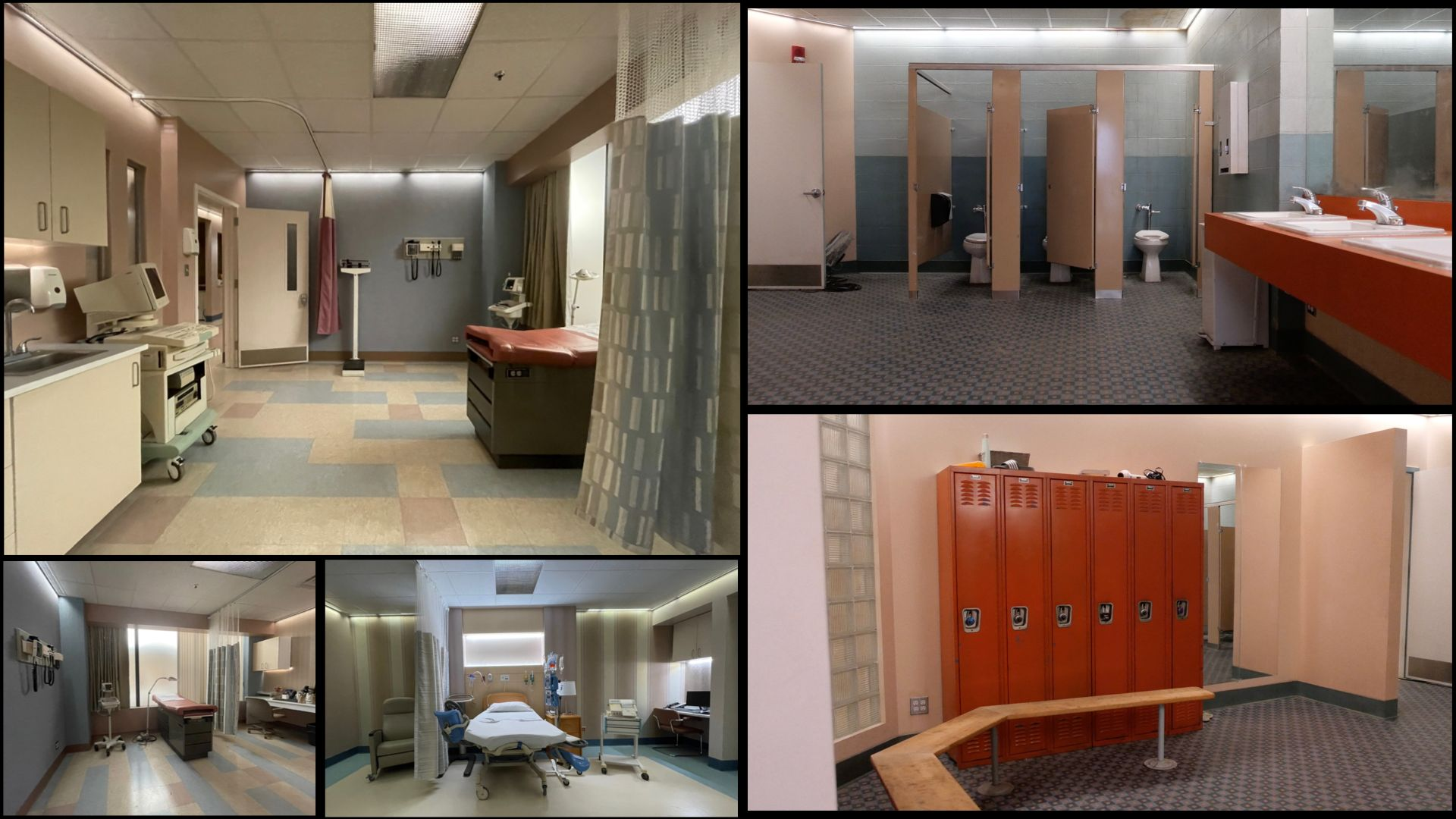
The bathroom that we see them both in, it was originally scripted that they each had their own. That was something that — right from the start — I suggested it made sense that they would share one. Alice, she’s exploring a lot of this codependent, toxic relationship between these two sisters. I felt that the way it was written, that they were meeting in there so often — and especially when the relationship with Genevieve starts — it felt like this is a perfect place to have them meet uncomfortably; connect through the doorways, see through in the mirrors, and give a lot of room in that environment for the Directors and the DPs to play. Then, have the ability for each to go back to their rooms. It was the one place Alice and I spoke about having a little bit more of their personality show through. Beverly’s, it’s all very blue, in one monotone, very calming, and reserved. There were some motifs that we used which were almost a bit religious, in this sanctuary for her, in line with who she is and who we are needing her to be.
Elliot is very much back in this cave, the bedroom that would be on the alleyway. She’s more comfortable in a dark corner. Even though it was all clearly highly designed by someone, our palette was a little more outrageous, fun, and vivacious, like her personality. We were using darker woods, hunter greens, golds, and this wallpaper that we fell in love with that was a mustard yellow. It had a floral pattern that was inspired by van Gogh’s Almond Tree paintings. It felt very apropos to me that that would be there, and this idea that we’d mess it up. That she would’ve come in, immediately messed it up, and probably given the interior designer a heart attack by slapping up a TV somewhere where it wasn’t built in, bringing in a random chair off the street that she found, piling up her clothes and her food. With the apartment, it was always the goal for it to be this visual manifestation of the twins and their codependency.
BTL: Is the TV the one that had the wires hanging down from it?
Magill: Yes! I’m so glad you saw that, because that was something the Director, Sean Durkin — of the first block — wanted. We spoke about that. It would have to be that you would see that. That was the definition of Elliot.
BTL: The twins sharing the bathroom is a big deal for the characters. You must have been pleased that Alice and Sean heeded your suggestion…
Magill: The fact that Alice and Sean were both open to that was one of the most rewarding parts about being the Production Designer. The story is always the most exciting and interesting thing to me that makes the job worthwhile. When there’s a way that I can help that story — not that I’m trying to influence, but help make the story even more visually interesting from the page through the design — of course I want to offer those ideas to my collaborators. It’s what makes filmmaking the unique, special art form that it is.
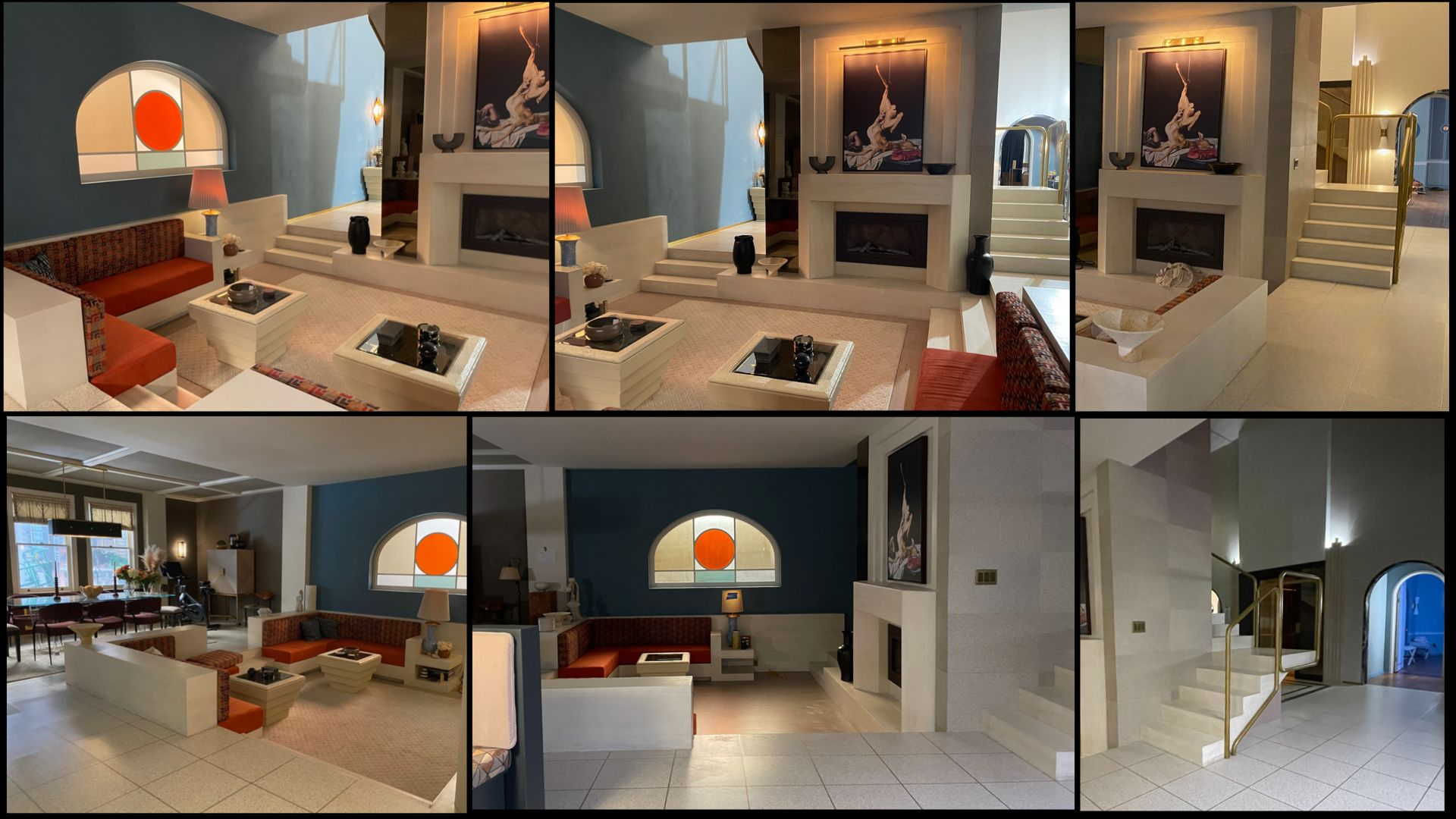
BTL: Speaking of collaborators, let’s talk about your team. Who could you not have done your job without?
Magill: Oh my God, my entire team. We were working on this in the summer of 2021, so that was the delta wave of COVID in New York. We were under a lot of serious protocols and thankfully my supervising Art Director, Marci Mudd — whom I’ve known for years — brought her stellar Construction and Scenic team after they had been on Succession together. Dustin Neiderman was my Graphic Designer, who also came from Succession. I brought my Decorator, Shannon Finnerty, and her team, whom I just worked with on Ziwe.
It was quite a bit, because we were initially building the first hospital we meet the twins working in — Westcott Memorial – and then we moved into their home, built the Parker Estate dining room to go along with the mansion location, and then our birthing center. It was quite a lot that we were asking at a time when prices were up. It was a very unique time to be building a world, but we were all thankful to be working. Uniformly, it was also a busy time and I was lucky because I got the team I got — to be honest — because everyone was so in love with Alice’s scripts, were all on board with that vision, and wanted to help see it through. We were all huge fans of Rachel’s work, and the minute we saw her magic starting to happen, it made the long days and hours worth it, to see that end result.
BTL: This will either be your favorite question of the day or the stupidest one you’ll hear, but when you broke down the Dead Ringers sets, did you call it dis-Mantle-ing?
Magill: [laughs] Well, that’s fair. That would’ve been a good one. They should have done that. I was just in New York visiting Shannon, and they’re finally getting rid of all the set dressing and things they hold onto for a long time. I should tell her to start using that in the group emails about it. That’s a good one.
Dead Ringers is streaming now on Prime Video.





